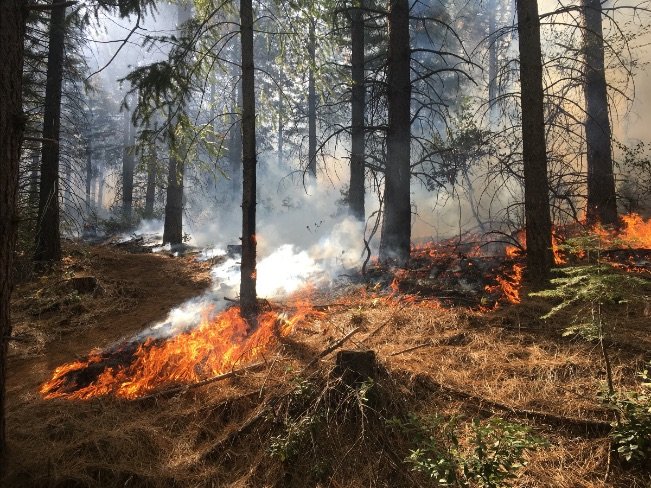Feb. 2020 Science Corner | “Barriers and enablers for prescribed burns for wildfire management in California”


One of the barriers cited by Miller et al. were “resource-related” so we wanted to know if she sees the Forest Resilience Bond as a possible enabler to counter those barriers.
Authors: Rebecca K. Miller, Christopher B. Field, Katharine J. Mach
Interview and story by: Peter Wyrsch
Written by Rebecca K. Miller, Christopher B. Field and Katharine J. Mach and recently published in Nature Sustainability Journal, the article “Barriers and enablers for prescribed burns for wildfire management in California,” asserts that prescribed burns to reduce fuel can mitigate the risk of catastrophic wildfires. However, multiple barriers limit their deployment, resulting in their underutilization. The article evaluates the sociopolitical barriers and opportunities for greater deployment in California.
We had the opportunity to chat with Rebecca Miller about her research and thoughts on the Forest Resilience Bond…
“California has a massive wildfire problem but there’s no no-fire solution to the issue” she said. “We need to be using every tool in our toolbox – prescribed burns, mechanical thinning, and even manage wildfires in remote areas and we need to be matching our treatment types to local ecological conditions. If we can increase our fuel treatment we may be able to start incorporating fire much more into wildfire solutions for California.”
One of the barriers cited by Miller et al. were “resource-related” so we wanted to know if she sees the Forest Resilience Bond as a possible enabler to counter those barriers. She explained that “addressing limited funding and personnel issues which can prohibit the use of prescribed fire in national forest land could be an excellent way to increase the use of prescribed burns.”
“One of the enablers that I found was having collaboration between non-profit organizations and policy makers as well as government agencies. The Forest Resilience Bond is a prime example of that kind of collaboration in action,” she added.